Design Process
For my vessels, I decided to use sine waves that move radially around a point for the base shapes of my forms. This allowed me to change multiple parameters: frequency, amplitude, radius, and height. I also used the z-twist code we went over in class and added an x-twist that could also be modified. They did not utilize the x-twist for the first two vessels, but the last one did. This is mostly due to how little variability the x-twist gives to the forms so few interesting forms were created by modifying it, but the last vessel does utilize it since I wanted to utilize it in at least one of my final vessels. After creating the first vessel, and seeing its potential flower-like visuals, the second vessel followed this design inspiration, the final vessel was, as previously mentioned, more of a goal to utilize the x-twist that the other two did not, so I wanted it to differ from the other two vessels more.
Images
Below are the renders of my three parametric vessels in Rhino:
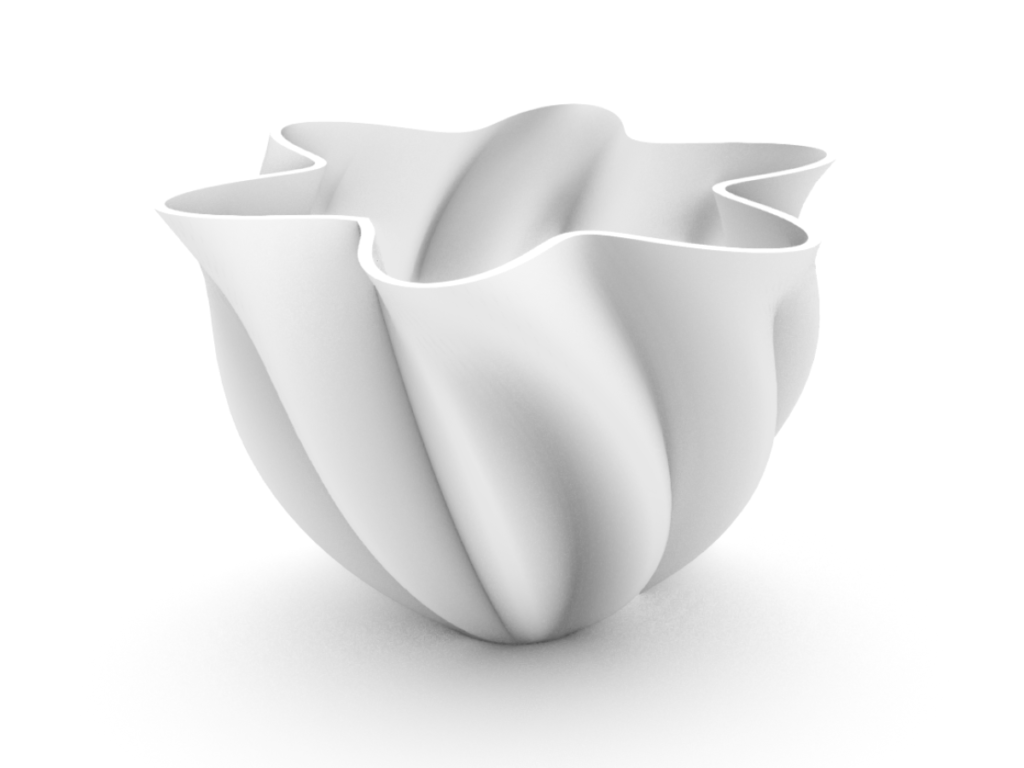

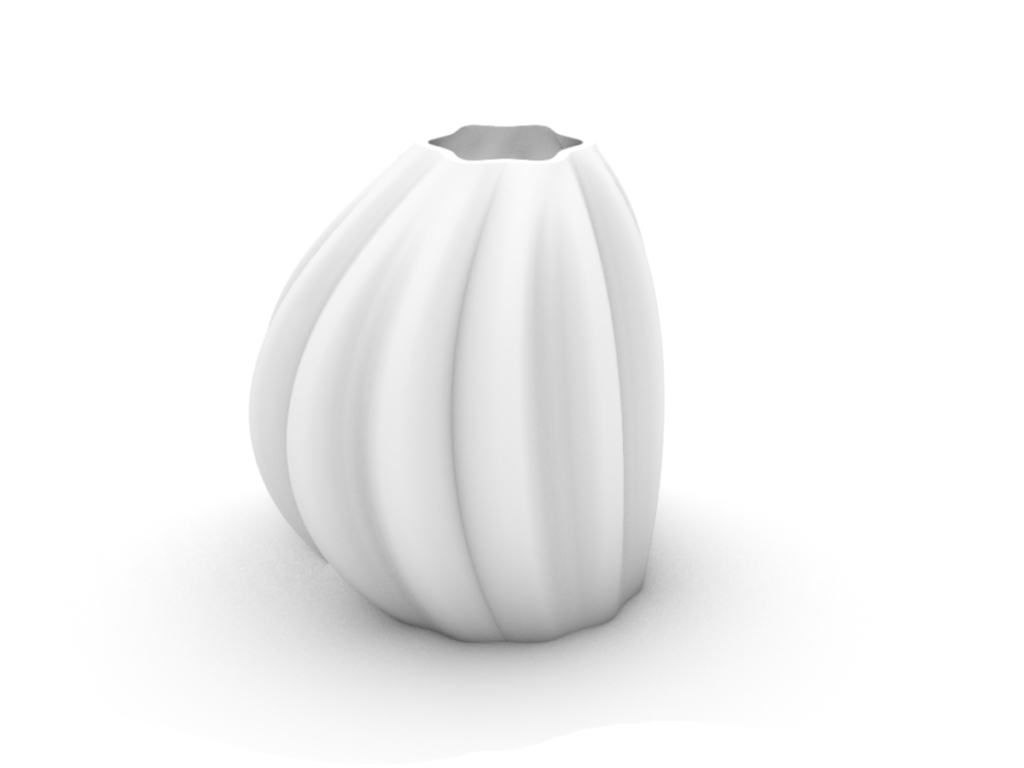
During printing:
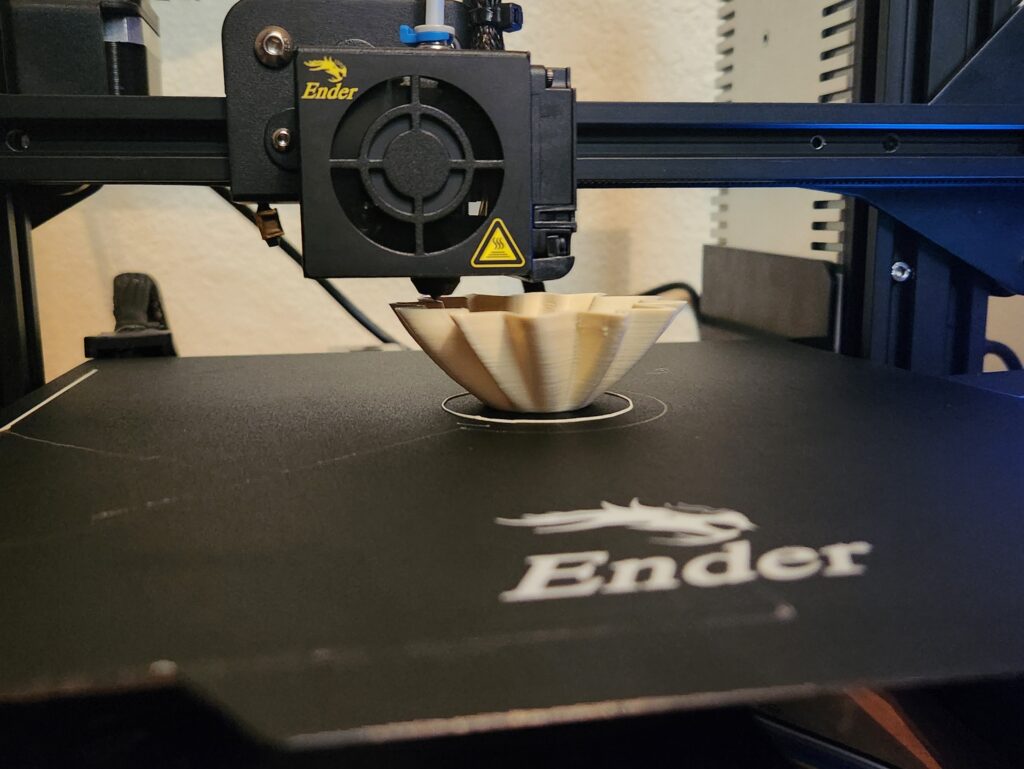
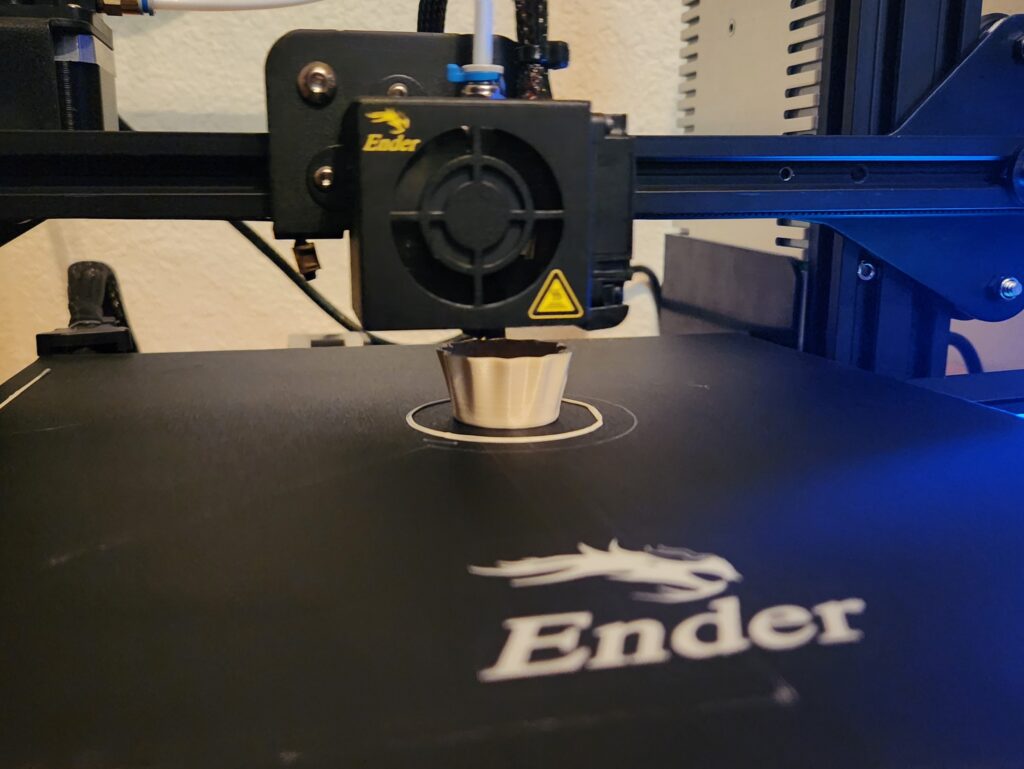
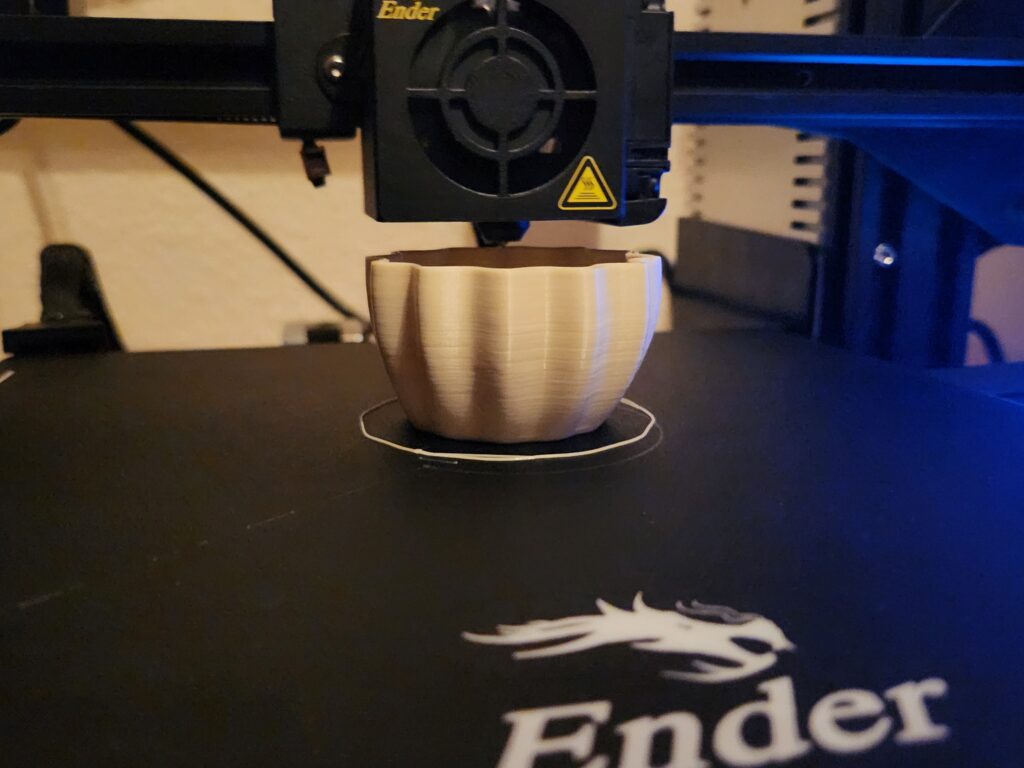
Final prints:
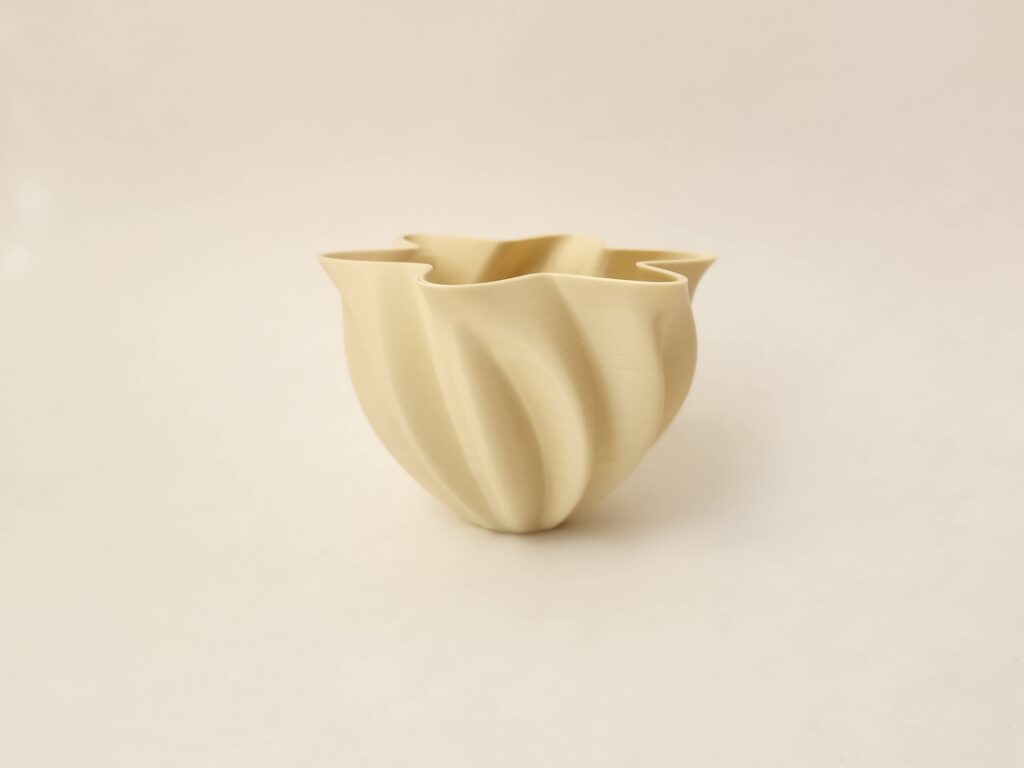
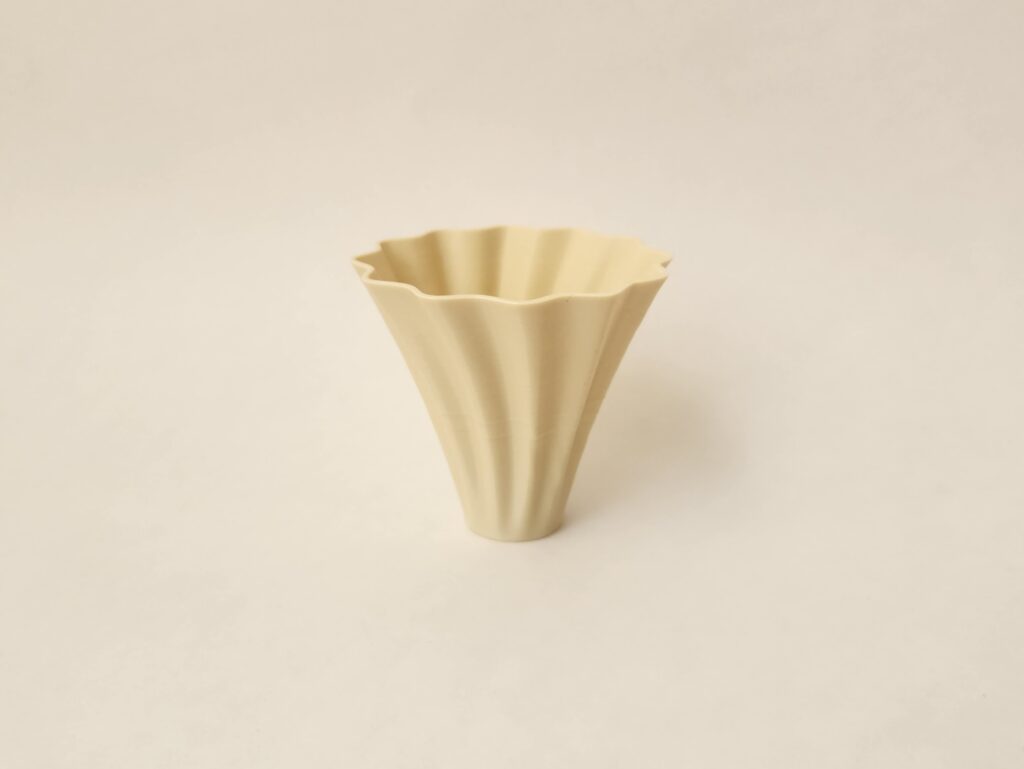
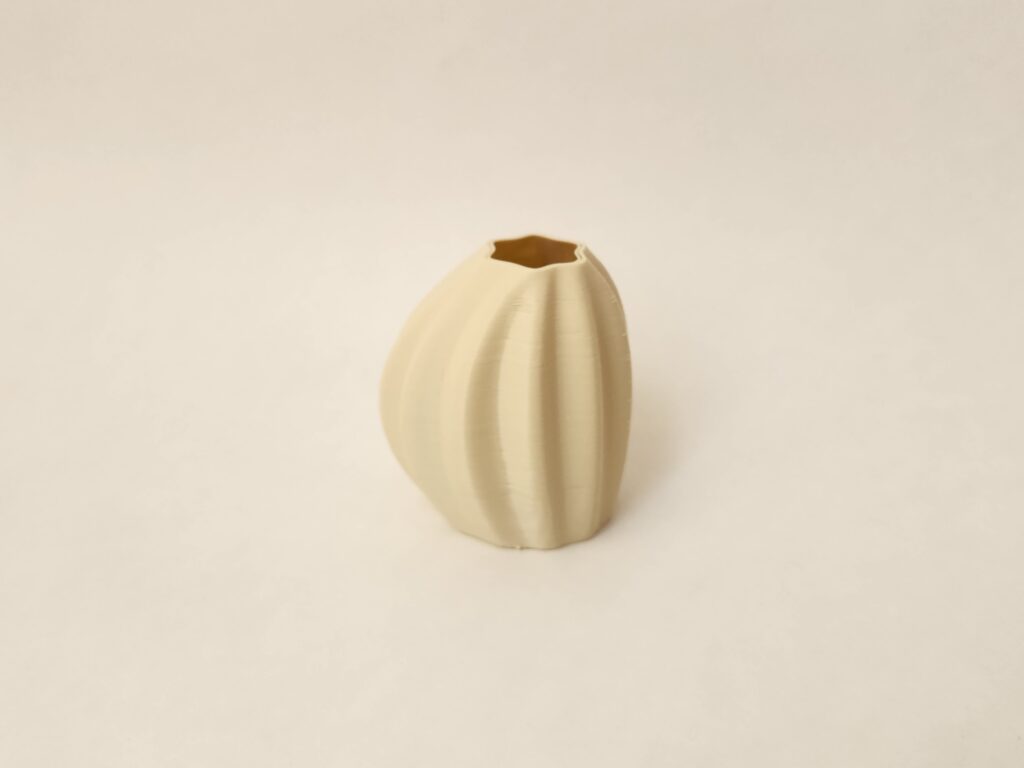
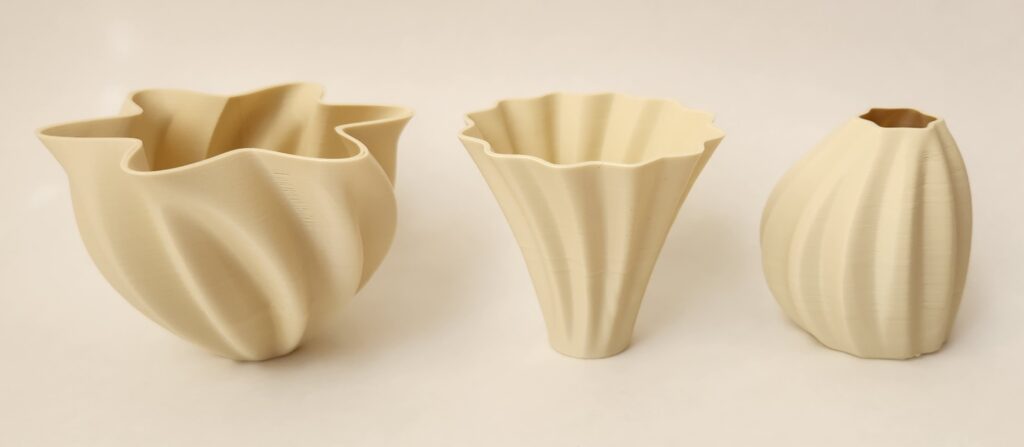
Parametric Design Process Reflection
Creating objects via programming, in comparison to just modeling in Rhino, makes it easier to create iterative forms and in this case objects with easy-to-adjust parameters. In the case of this assignment, it was much easier to see the change in real-time than in just Rhino where changing one part of the object wouldn’t change until the parameter was finalized. 3D printing is known for being great for quick prototyping and this showcases itself here. While some prints do take a very long time it is not time putting manual labor into it, most of the process is fairly hands-off outside of making sure the print hasn’t failed mid-print. A more traditional making process would be much more labor intensive, and I don’t think I could personally create these vessels myself.
The advantage of this kind of process is that inputting data or adjustable parameters makes it much easier to create something where this is needed. However, it is less useful when creating something more organic or something where there is a very clear vision in mind. In these cases creating the object itself geometrically or sculpted digitially may be much easier. In regards to 3D printing, it is good at prototyping but there are only so many materials that are cost-effective and easy to use, and even while minimizing the print lines in a piece it might just not be smooth enough for the final use case. A resin printer might mitigate this in some cases where a mold can be made and anything that can be cast can be used as a material as the print would be very smooth.
Creative Agency and Intent Reflection
When designing my vessels, outside of the initial choice to create the base shapes with sine curves, I mostly adjusted the parameters until I found something that I liked. I did try and look at inspiration from vases and cups but it did not lead me anywhere too interesting when I had tried to implement it into my vessels. For the first vessel, I sketched very loose shapes I thought might look nice, this one being more flower-like which also inspired the second one which I find to also be very flower-like. I mostly wanted to see if I could make variety in shapes as well, trying to make each vessel unique while still using the same basis.
I do find my authorship more disconnected from these vessels than I would in a more traditional design process. I am not sure if this is because I think about a more traditional design process, for me personally, as digital painting. When I create a digital painting, while it is still digital, I feel a much stronger sense of authorship. I feel in the case of this assignment that my sense of authorship is more attached to the code than to the final vessels since the Grasshopper and Python code is what needed more effort to set up and is what ultimately was used to create the vessels.
Hi, Luka!
Great designs and I like your flower shaped vessel! Also, I agree with your reflection that creating with 3D printing the authorship feels more disconnected than traditional design process. It feels like idea is yours but not the design if that make sense. On top of that, what was the process like for your flower shaped vessel? How many lines (z-axis) did you loft it with?
Hi Bat, thank you! I do get what you mean about feeling like the idea is yours and not the design, especially since if someone else had the code they could also create other things. For the flower-shaped vessel, and all three of my vessels for that matter, I only used three curves to loft the initial shape. For this one my process was that I left the base with no frequency so it was just a circle and the other two curves had 12 and 6 waves since I wanted it to be the same from all angles when it was lofted. I also used the z-twist code on at least the top curve, and maybe the middle curve too but I don’t quite remember.
Hi Luka!
I really enjoy your use of sine waves for your vessels. The flower-like shapes you created are impressive, and it’s cool that you experimented with both z-twist and x-twist. Your focus on adjusting parameters for each vessel shows great creativity and allows for unique designs while maintaining a cohesive look.
I can relate to your thoughts on authorship. It’s interesting how you feel more connected to the coding process than to the final designs, especially compared to traditional methods like digital painting. Personally, I really like your first vessel; the filament color you chose looks fantastic.
I also appreciate your insights on creative agency. It’s understandable that you feel more disconnected from your vessels since the code plays such a crucial role in their creation. Striking a balance between creativity and technical execution can be tricky, especially with parametric design.
Hi Daniel, thanks! I’m kind of surprised how much other people have liked the filament color since I mostly picked it because, while I did expect it to be a bit darker, it was more of a mid-tone but wasn’t as bland as grey if I ever wanted to paint over future prints. For your last point, I feel like maybe other more involved projects may make me feel more connected to the final piece but that’s something to think about maybe closer to the end of the course.
Hello Luka,
I think its supper cool that you were able to have an off center thickness like on 3rd vessal. I am also shocked at what people are printing with out supports… Your 1st vessal in the printing images would making my heart race. The other 2 commenters brought of the disconnected for the creating with 3d printing, and I will too =)…I having hard time seeing what you mean by the code meaning more. The comment to me feels like because the code could make many (infinitely) vessels, so I love the code and not the vessel. If the code would only make 1 vessal would you feel authorship of that one vessal?